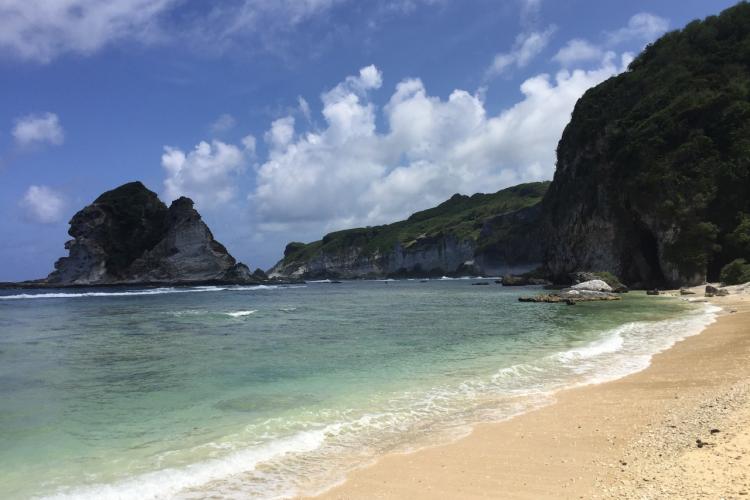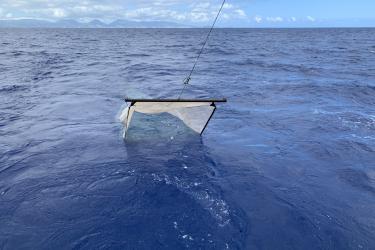Hafa adai! (That’s how you say “hello” in the Mariana Islands.)
The Marianas are a remote archipelago in the western Pacific Ocean that includes the Commonwealth of the Northern Mariana Islands (CNMI) and Guam—two U.S. territories—with more than 200,000 residents. Of the many marine species that also inhabit the island region, most of the fishes reside there throughout their lives, while some of the cetaceans (whales and dolphins) may only be seasonal. This year, our scientists conducted two research expeditions in waters around the Marianas to investigate the lives of these species—the Fish Life History Cruise and Mariana Archipelago Cetacean Survey. I traveled to Saipan, to share our research efforts and connect the residents with our science.
The people of Saipan have close ties to the marine environment. During my visit, I worked with government and non-profit community organizations, including an internship program, a summer camp, the Micronesia Islands Nature Alliance, and the Northern Marianas College. I also attended a fishing and seafood festival and sailed on a traditional voyaging canoe.
My first stop in Saipan was the CNMI’s Bureau of Environmental and Coastal Quality to meet with the Coral Reef Initiative Internship Program. There are 10 undergraduate students interning from the Northern Marianas College, as a part of NOAA’s Coral Reef Conservation Program. I presented some of the research highlights of the two expeditions and then the interns were broken into three groups to rotate through different education stations. They learned about how scientists use acoustics to study cetaceans at sea, how to use dorsal fin photographs to identify and match individuals, and how to age a fish based on rings identified on an otolith (ear bone). I was very impressed by how knowledgeable and motivated these students are. As the next generation of scientists in CNMI, they made me hopeful that the waters surrounding their archipelago will be well looked after moving into the future.

The next stop in Saipan was a visit to 4-H Marianas’ Camp Maga’lahi. 4-H Marianas is a non-profit organization that helps to promote agriculture, healthy living, environmental and outdoor learning, STEM (science, technology, engineering, and mathematics), indigenous culture, and creative arts learning among the youth of CNMI. They run the free camp for kids ages 7 to 14, five days a week for six weeks, providing healthy lunches each day. During this visit, I was able to connect with the kids attending camp, as well as the high school-age camp counselors.

I explained to them how we monitor marine fishes, corals, and mammals, and about the missions of the two research expeditions in Guam and CNMI this summer. They learned about the different cetacean species that live around their islands, like spinner dolphins and humpback whales, and the research tools we use to study them. They also learned about many commercially-important fish species and how to age a fish by counting rings in its otoliths. These students were incredibly enthusiastic and curious.

To my delight, the Mariana Islands Fishing and Seafood Festival was also happening while I was in Saipan. This is a community event—a place for families that promotes preservation of our ocean environment and fish stocks through responsible fishing practices, all while highlighting the importance of fisheries to the CNMI economy. The Okeanos Marianas set sail during the festival, and I had the privilege of joining them! The traditional sailing canoe takes long voyages around the western Pacific, which could offer the crew unique opportunities to conduct citizen science. The crew comes from Saipan, as well as some of the neighboring islands, such as Satawal, where the revival of Polynesian navigation and canoe building began during the Polynesian cultural renaissance. We shared ideas about how they might they might contribute to our studies of humpback whales that migrate to CNMI because little is known about them and our photo catalogue from the area is limited.

Overall, my visit to Saipan was a huge success and I was proud to share our science with the people that live in this area. The students and our partners were enthusiastic about our research and interested in finding ways to collaborate in the future.
Meet the Blogger





